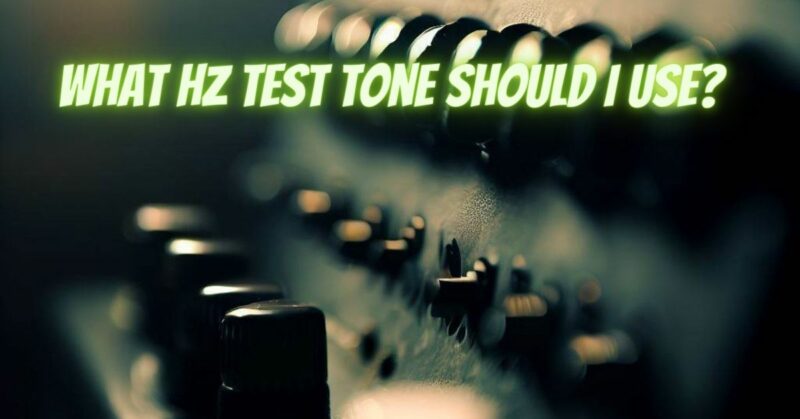In the intricate world of audio tuning and calibration, selecting the appropriate test tone frequency in Hertz (Hz) is a crucial decision that significantly impacts the accuracy and effectiveness of your audio setup. A test tone serves as a reference point for evaluating various aspects of your audio system, including speaker performance, frequency response, and room acoustics. In this article, we’ll delve into the considerations and insights behind choosing the right Hz test tone to achieve precise audio calibration and unlock the potential of your sound system.
Understanding Test Tones:
A test tone is a steady, single-frequency sound that serves as a reference for audio calibration. It allows you to evaluate how different components of your audio system—such as speakers, amplifiers, and room acoustics—respond to specific frequencies. By analyzing the output and response of your system to the test tone, you can identify areas for improvement and make adjustments to achieve accurate sound reproduction.
Factors Influencing Test Tone Selection:
- Purpose of Calibration: The first step in choosing a test tone is to define your calibration goals. Are you focusing on evaluating bass response, midrange clarity, or high-frequency accuracy? Your purpose will guide the selection of the appropriate frequency.
- Frequency Response of Components: Different components of your audio system have varying frequency response capabilities. Consider the frequency ranges that your speakers, subwoofers, and drivers are designed to handle effectively.
- Room Acoustics: The acoustic properties of your listening environment also influence test tone selection. Certain frequencies may resonate or cancel out in your room, affecting how you perceive sound. Test tones can help you identify acoustic anomalies.
- System Integration: If you’re using multiple speakers or subwoofers in your setup, the integration of these components plays a significant role. Test tones can reveal phase issues and alignment problems between different drivers.
Common Test Tone Frequencies:
- Subwoofer Calibration (Bass): Frequencies between 20 Hz and 80 Hz are commonly used for evaluating subwoofer performance. These frequencies focus on the deep bass and low-frequency response of your system.
- Midrange and Vocal Clarity: Frequencies in the range of 500 Hz to 2 kHz are ideal for assessing midrange and vocal clarity. This range is critical for evaluating the definition and presence of instruments and voices.
- High-Frequency Accuracy: Frequencies between 2 kHz and 10 kHz help evaluate the accuracy and detail of high-frequency reproduction. This range is essential for ensuring crispness and articulation in your audio.
Choosing the Right Test Tone:
- Start Broad and Narrow Down: If you’re new to audio calibration, begin with a broad test tone in the midrange frequency range (around 1 kHz) to get a general sense of your system’s performance. As you gain experience, you can narrow down the frequency to target specific aspects of your setup.
- Consider System Weaknesses: If you suspect that your system has weaknesses in certain frequency ranges, use test tones that address those areas. For instance, if you’re experiencing a lack of bass, focus on subwoofer frequencies.
- Room Acoustics Exploration: Test tones can help you identify room modes and resonances. Play test tones across different frequencies and listen for areas where the sound becomes excessively boomy or thin.
Listening and Observing:
- Audible Artifacts: While evaluating your audio system with test tones, listen for audible artifacts such as distortion, resonances, and phase inconsistencies. These observations guide your adjustments.
- Equalization and Adjustment: Once you’ve identified areas that need improvement, make equalization and adjustment changes based on your observations. Experiment with different settings and listen for improvements.
Choosing the right Hz test tone is a critical step in achieving precise audio calibration. By understanding the purpose of your calibration, the capabilities of your components, and the influence of room acoustics, you can select test tones that effectively evaluate different aspects of your audio system. The art of audio calibration involves attentive listening, thoughtful adjustments, and a continuous pursuit of sonic excellence. With the right test tones as your guide, you can unlock the full potential of your audio setup and immerse yourself in sound that resonates with clarity, accuracy, and emotion.


